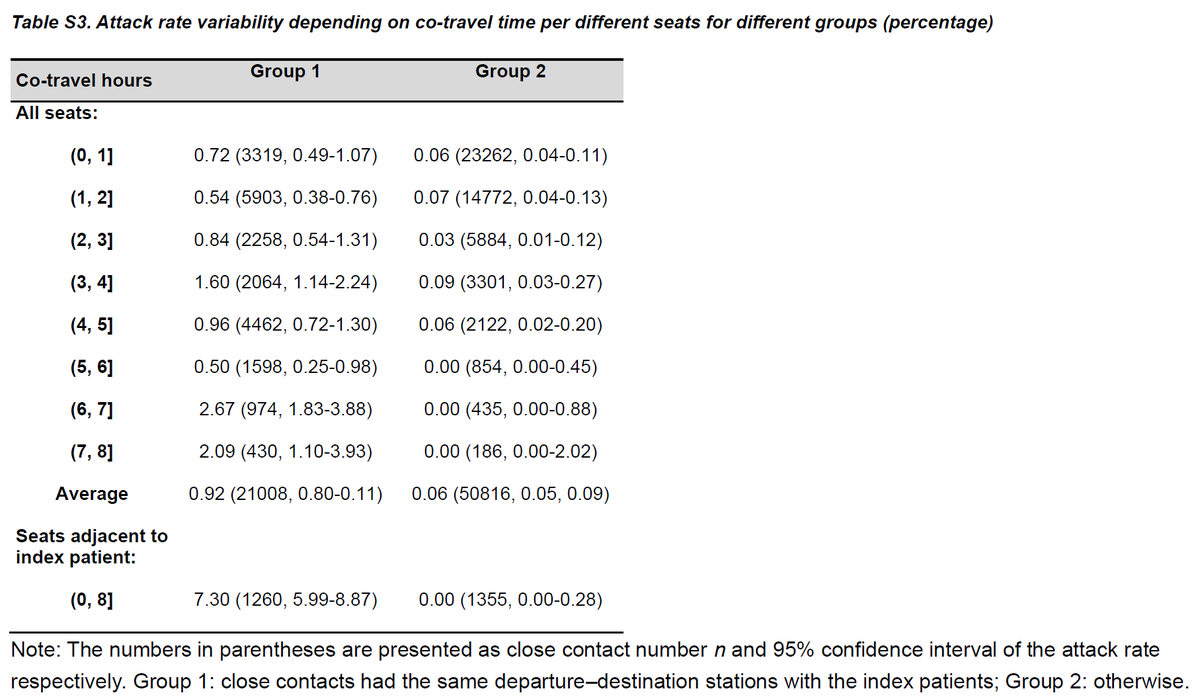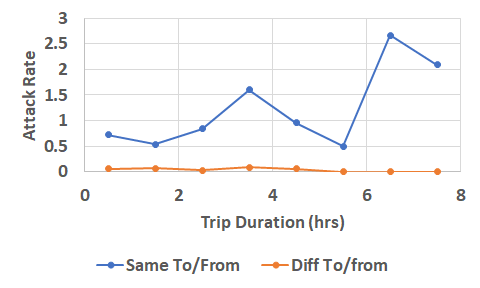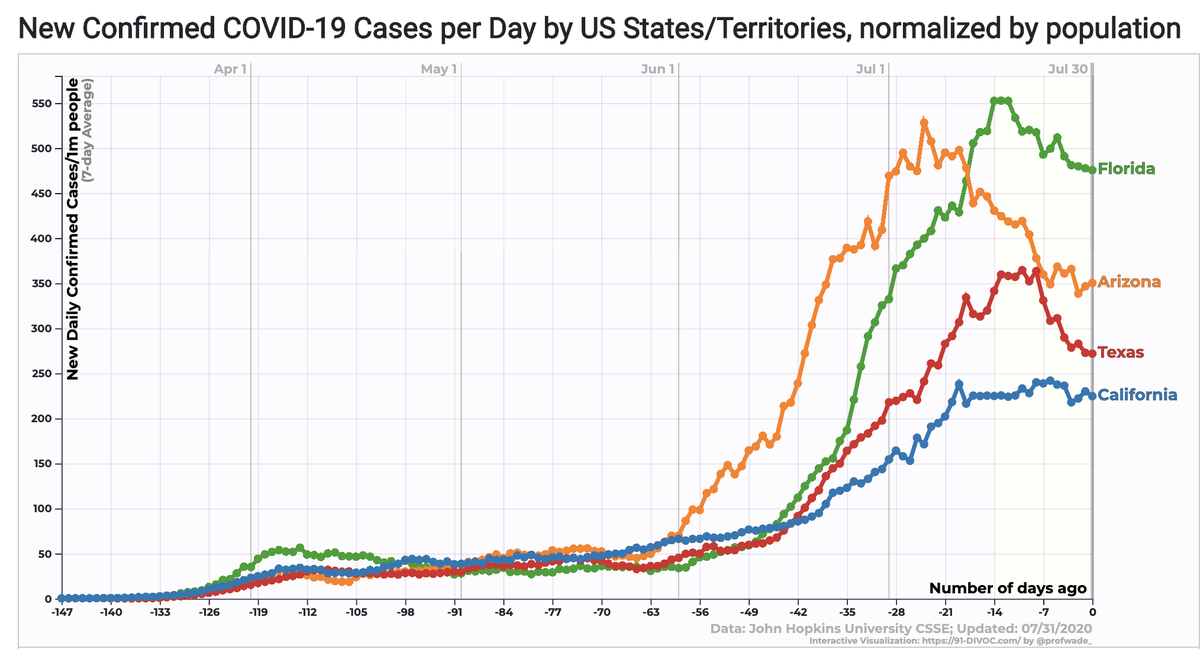Index cases: infected people who took train. Contacts - potential 2ndary cases - are passengers who sat w/in 3 rows or 5 columns of index case. Metric/Response variable: did contact get sick in next 14d (attack rate in %).
What are odds for 8 hr trip? Much lower (or vice versa - more likely to take long trip w/ fam)








